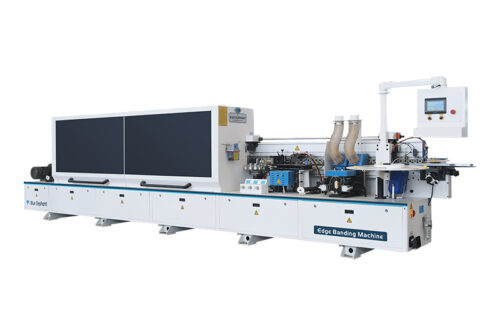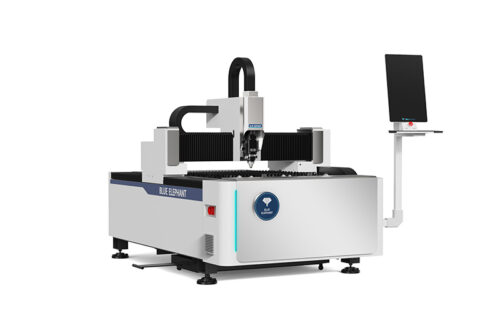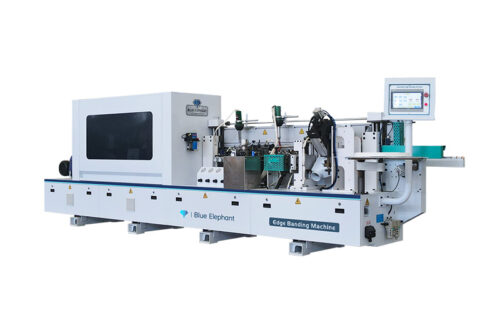Someone once asked me, “If you could go back and start over, what tool would you buy first?”
Without hesitation, I said, “A CNC router.”
At the time, I didn’t understand just how powerful these machines were. I thought they were just for big factories, not small shops or personal projects. I was wrong.
If you’re here, you probably have similar questions: What is a CNC router? How does it work? And do you actually need one? I’ve been in your shoes, and I’ve worked with these machines long enough to know what’s important.
In this guide, I’ll break it all down in simple terms, so by the end, you’ll have the knowledge to decide if a CNC router is right for you.
Let’s get started!
1. What is a CNC Router?
If you’ve ever spent hours measuring, cutting, and shaping materials by hand, you know how time-consuming and frustrating it can be. One small mistake can throw everything off. A CNC router takes that stress away.
CNC stands for Computer Numerical Control. It’s a system that automates cutting, carving, and engraving with extreme precision. Instead of guiding a tool by hand, you control it with a computer. This allows for faster, more accurate, and repeatable results, whether you’re making furniture, signs, or custom parts.
Now, how is it different from manual cutting?
With manual tools, you rely on steady hands, careful measurements, and years of experience. Even skilled craftsmen make errors, and repeating the same cut over and over is exhausting.
A CNC router eliminates those problems:
- Precision: It follows exact coordinates, meaning every cut is identical.
- Efficiency: It completes complex shapes in minutes, saving time.
- Consistency: Once programmed, it can repeat the same design perfectly, no matter how many times you need it.
But how does it actually work? Let’s break it down.
A CNC router operates in 3 main stages.
- Design Stage
It all starts with a digital design. You create this using CAD (Computer-Aided Design) software like AutoCAD or Fusion 360. Think of it as drawing your project on a computer instead of paper. The software allows you to adjust dimensions, add intricate details, and visualize the final product before cutting begins.
- Toolpath Generation
Once your design is ready, it moves to CAM (Computer-Aided Manufacturing) software. This software translates the design into machine instructions, known as G-code.
G-code acts like a set of directions:
- It tells the machine where to move.
- It controls the cutting speed and depth.
- It selects the right tool for each step.
Some CNC routers use DSP controllers (standalone devices that don’t need a computer), while others rely on PC-based systems that work through specialized software.
- Machining Process
Now, the magic happens. The CNC router follows the programmed toolpaths, moving its cutting tool across the material with precision.
Here’s what happens during machining:
- The spindle (cutting tool) rotates at high speed.
- The machine moves along the X, Y, and Z axes to carve, cut, or engrave.
- The design takes shape, exactly as planned in the software.
At this point, you get a finished piece that is accurate, repeatable, and free of manual errors.
Ever wondered how businesses create thousands of identical parts without mistakes? CNC routers make that possible. Now that you understand the basics, let’s look at different types of CNC routers and their uses.
2. Types of CNC Routers & Their Applications
Not all CNC routers are the same. Some are built for simple engraving, while others can carve complex, multi-dimensional shapes. Choosing the right one depends on what you need it for.
Let’s break it down.
CNC Router Types Based on Axis Movement
The number of axes a CNC router has determines how much movement it can handle. More axes mean more flexibility, but they also come with a learning curve.
- 3-Axis CNC Router: The most common type. It moves in three directions: X (left to right), Y (front to back), and Z (up and down). Great for flat cutting and engraving on wood, plastic, and metal.
- 4-Axis CNC Router: Adds a rotating axis, allowing the spindle to tilt or the workpiece to turn. This makes it easier to carve curved surfaces, rounded edges, and cylindrical designs.
- 5-Axis CNC Router: The most advanced option. It moves in all directions and tilts the cutting tool at different angles. This is useful for complex 3D shapes, high-precision mold making, and aerospace parts.
CNC Router Types by Use Case
Different industries require different CNC routers. The right machine depends on what you plan to cut.
- Wood CNC Routers: Used for furniture, cabinets, doors, and decorative carvings. These machines are common in woodworking shops.
- Metal CNC Routers: Designed to cut aluminum, brass, and soft metals. Used for making machine parts, nameplates, and detailed engravings.
- Acrylic & Plastic CNC Routers: Perfect for sign making, advertising displays, and plastic fabrication. Provides smooth, precise cuts without melting the material.
- Stone CNC Routers: Used for marble engraving, tombstone lettering, and decorative stonework. These machines require special bits to handle hard surfaces.
- Foam & Composite CNC Routers: Best for mold making, prototyping, and large-scale carvings. Used in industries like automotive and aerospace.
So, which one should you choose? It depends on a few key factors.
- Industry-Specific Requirements: What type of work are you doing? A sign maker has different needs than a furniture maker.
- Material Compatibility: Not all CNC routers handle all materials. Some struggle with metals, while others excel at cutting plastics.
- Budget vs. Features: Higher-end machines offer more precision and flexibility, but they also come at a cost.
- Space and Power Requirements: Do you have enough room? Some CNC routers need dedicated workshop space and industrial power sources.
If you’re still unsure which CNC router fits your needs, Blue Elephant specializes in manufacturing CNC machines for a wide range of industries. Whether you need a compact model for a small shop or a high-performance machine for large-scale production, we can help you find the right solution.

3. Key Components of a CNC Router
A CNC router might look complex at first, but once you break it down, it’s just a set of essential parts working together. Each component plays a role in ensuring precision, speed, and efficiency. Understanding these parts can help you make better decisions when choosing, maintaining, or troubleshooting a machine.
Spindle
The spindle is the heart of a CNC router. It holds and spins the cutting tool at high speeds to carve, cut, or engrave materials. Spindles come in different power levels and RPM (rotations per minute) settings, depending on the job.
- Air-cooled spindles use fans to keep the motor cool. They are easier to maintain but can get noisy.
- Water-cooled spindles use circulating water to control temperature, offering quieter operation and longer life.
Worktable
This is where the material sits while being cut. Different types of tables offer different benefits:
- Fixed tables stay in place, best for simple cutting tasks.
- Vacuum tables use suction to hold materials securely, preventing movement.
- T-slot tables allow manual clamping for better hold on irregular materials.
Motors & Drives
CNC routers rely on motors to move the cutting tool with precision. There are two main types:
- Stepper motors: Affordable and accurate, but they lose torque at high speeds.
- Servo motors: More expensive but provide smoother and faster movements.
Control System
The control system is the “brain” of the CNC router. It interprets toolpath instructions and directs machine movement. There are 3 main types:
- G-code controllers: Standardized across many CNC machines.
- DSP controllers: Standalone units that don’t require a computer.
- PC-based systems: Controlled using software on a computer.
Cutting Tools
Choosing the right cutting tool makes a huge difference in quality and efficiency.
- Router bits: Best for general-purpose cutting, engraving, and shaping.
- End mills: Designed for precise cutting with clean edges, often used in metalworking.

4. Software Used in CNC Routing
A CNC router is only as good as the software controlling it. Without the right programs, even the most advanced machine won’t produce accurate results.
If you’re new to CNC routing, choosing the right software can feel overwhelming. But once you break it down, it’s much easier to understand. Let’s go through each type and what it does.
CAD (Computer-Aided Design) Software
Before a CNC router can cut anything, you need a design. That’s where CAD (Computer-Aided Design) software comes in. CAD programs let you create digital blueprints of your projects, whether it’s a simple engraving or a complex 3D model.
Popular CAD software includes:
- AutoCAD: One of the most widely used CAD programs, great for detailed technical drawings.
- SolidWorks: A powerful tool for designing mechanical parts and complex assemblies.
- Fusion 360: Combines CAD and CAM in one package, ideal for both beginners and professionals.
A good CAD program should allow you to create, modify, and optimize your designs before they are sent to the machine. The more precise your design, the better the final product.
CAM (Computer-Aided Manufacturing) Software
Once your design is ready, it needs to be converted into instructions the CNC router can understand. This is where CAM (Computer-Aided Manufacturing) software comes in.
CAM software translates your design into G-code, the programming language that tells the machine how to move, how fast to cut, and which tools to use.
Common CAM software options include:
- VCarve: Perfect for sign-making, engraving, and woodworking.
- Aspire: Offers advanced 3D carving capabilities.
- ArtCAM: Used for detailed artistic engravings and decorative CNC work.
When choosing CAM software, look for one that supports toolpath customization, material settings, and preview options to see how your design will be cut before running the machine.
Control Software
After generating the toolpaths, you need software to communicate with the CNC router and execute the cuts. This is where control software comes in.
Control software takes the G-code from the CAM program and directs the CNC router’s motors, spindle, and cutting tools to move precisely as programmed.
Popular control software options include:
- Mach3: A widely used CNC control program that works on Windows-based systems.
- GRBL: An open-source control system designed for small CNC machines.
- LinuxCNC: A powerful, free control software that runs on Linux-based systems.
Some machines come with built-in proprietary control software, while others allow you to choose your own. If you’re using a PC-based CNC router, make sure the control software is compatible with your operating system.

5. CNC Router vs. Other Cutting Machines
Choosing the right machine depends on what you’re cutting, the level of precision needed, and the speed required. Below is a comparison of CNC routers with other cutting tools to help you decide.
| Feature | CNC Router | Laser Cutter | CNC Milling Machine | Manual Cutting Tools |
| Cutting Process | Uses a rotating cutting tool to carve through materials. | Uses a high-powered laser to burn or vaporize materials. | Uses a rotating cutter to remove material in precise increments. | Requires handheld tools like saws, chisels, or drills. |
| Precision | High precision but may leave tool marks that need sanding. | Extremely precise with smooth, clean edges. | Very high precision, especially for metals. | Depends on the skill of the operator. |
| Cutting Depth | Can cut deep but best for surface-level carving. | Best for engraving and thin materials, struggles with thick materials. | Designed for deep, precise cuts. | Limited by tool and operator’s control. |
| Material Compatibility | Works on wood, plastic, metal, foam, and composites. | Best for wood, acrylic, and thin metals. | Works best for metal and high-precision parts. | Works on all materials but requires skill and effort. |
| Productivity & Speed | Fast, can produce high volumes with automation. | Fast but best for intricate, detailed designs. | Slower than a CNC router but offers extreme precision. | Time-consuming and requires manual effort. |
| Best For | Furniture, sign-making, and prototyping. | Engraving, delicate designs, and intricate cuts. | Machining metal parts and engineering applications. | Small custom projects or one-time cuts. |
A CNC router is a great all-around option for cutting, engraving, and shaping a wide range of materials. But depending on your needs, a laser cutter or milling machine might be a better fit.
6. How to Choose the Best CNC Router for Your Needs
Buying a CNC router is a big decision. It’s not just about picking the most powerful machine or the one with the highest price tag. You need the right balance of size, power, and features for your specific projects.
So how do you know which CNC router is the best fit? Let’s break down the key factors to consider.
Work Area Size
Think about the size of the materials you’ll be cutting. If you’re making small signs or jewelry, a desktop CNC router might be enough. But if you’re working with large sheets of wood or metal, you’ll need a machine with a bigger work area.
A common mistake is buying a router that’s too small, only to outgrow it within months. It’s better to plan for future projects rather than limit yourself too soon.
Spindle Power
The spindle is what does the actual cutting. Its power is measured in watts or horsepower. More power means the ability to cut through tougher materials and work faster.
- Low-power spindles (under 2kW) are fine for softwoods, plastics, and light engraving.
- Mid-range spindles (2kW-5kW) can handle hardwoods, aluminum, and acrylics.
- High-power spindles (5kW and above) are built for thick metals and heavy-duty production.
Software Compatibility
CNC routers run on CAD (Computer-Aided Design) and CAM (Computer-Aided Manufacturing) software. Some machines only work with specific programs, so check software compatibility before buying.
If you already use software like AutoCAD, VCarve, or Fusion 360, make sure your CNC router supports it. Otherwise, you might need to learn a new program from scratch.
Material Handling
What do you plan to cut? Not all CNC routers handle every material.
- Woodworking routers are different from metal-cutting routers.
- Some machines have vacuum tables to hold thin materials in place.
- Others have heavy-duty clamps for working with thick stock.
If you’re unsure, look at the materials recommended by the manufacturer.
Budget & Long-Term Costs
CNC routers come in a wide price range. But price isn’t just about the machine itself. Consider long-term costs like:
- Replacement parts (spindles, motors, and control boards).
- Cutting tools and bits.
- Maintenance and repairs.
- Software updates or subscriptions.
It’s tempting to go for the cheapest option, but cutting corners now can lead to higher costs later. Investing in a well-built machine from a trusted brand, like Blue Elephant, can save you money in the long run.
Conclusion
You came here looking for answers. Now, you understand what a CNC router is, how it works, and why it might be the best tool for you.
The only thing left? Taking action.
Imagine having a machine that does the hard work for you, perfect cuts, faster production, and less waste. How would that change your business or projects?
If you’re serious about upgrading your workflow, Blue Elephant is ready to help.
Contact us today and let’s find the CNC router that fits your needs.
Explore More Helpful Resources
Want to see more products? We’ve got plenty of options that might just be the perfect fit for you:
If you’re looking for more insights, we’ve put together a list of helpful articles that you might enjoy:
Getting Started with CNC Routers
Troubleshooting & Comparisons
- Top 7 CNC Router Problems and How to Solve Them
- Spindle vs Router: Key Differences Explained
- CNC Router vs Laser Cutter: A Side-by-Side Comparison
Still haven’t found what you’re looking for? Don’t hesitate to contact us. We’re available around the clock to assist you.













